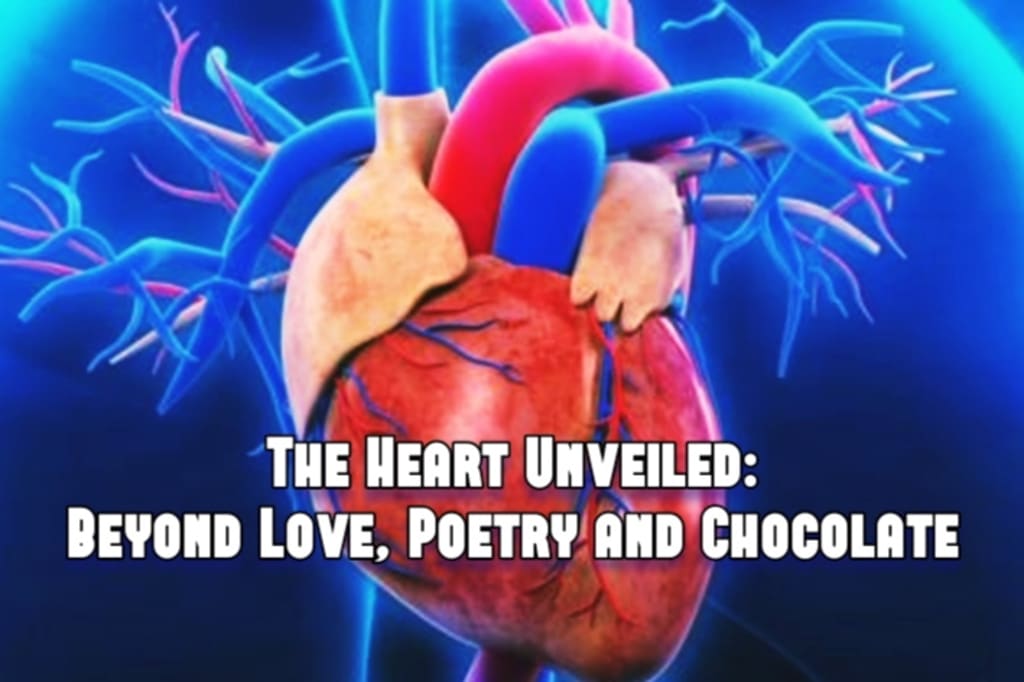
The Heart: More Than Just a Pump
The heart, that throbbing, beating muscle, is arguably the most iconic organ in the human body. It’s the only organ with its own holiday and numerous mentions in songs. You’re unlikely to receive a love note adorned with a kidney or a spleen, or even a brain, despite its role in emotions.
The Heart's Remarkable Functions
While the heart performs essential tasks, like powering the circulatory system and transporting nutrients, oxygen, waste, heat, hormones, and immune cells throughout the body, it does not generate love or heartbreak. It’s not a poetic or emotional entity.
In reality, the heart functions as a pump -- a robust, muscular pump that doesn’t concern itself with poetry, chocolate, or tears. Its primary role is maintaining pressure.
Blood Pressure: The Heart's Balancing Act
If you’ve ever used a squirt gun or opened a shaken soda can, you’ve seen how fluids move from high pressure to low pressure. The heart’s job is to maintain a similar pressure gradient by generating high hydrostatic pressure to pump blood out and creating low pressure to draw it back in. This pressure gradient is what we refer to as blood pressure, measuring the strain on your arteries as the heart circulates over five liters of blood at around 60 beats per minute. This amounts to about 100,000 beats a day, 35 million a year, and 2 to 3 billion heartbeats in a lifetime, a rhythm you can easily feel by taking your pulse.
The Heart's Position and Structure
For most people, the average adult human heart is about the size of two fists clasped together, a rare but accurate piece of trivia.
The heart is a hollow, cone-shaped organ weighing around 250 to 350 grams, modest for such a vital workhorse. Though Americans often place their right hand over their left breast when pledging allegiance, the heart is actually located near the center of the chest, nestled in the mediastinum cavity between the lungs. It sits at an angle, with one end pointing towards the left hip and the other towards the right shoulder, positioning most of its mass slightly left of the midsternal line.
The heart is encased in a double-walled sac called the pericardium. The tough outer layer, or fibrous pericardium, made of dense connective tissue, protects the heart and anchors it to surrounding structures, preventing it from bouncing around while beating. The inner serous pericardium includes an inner visceral layer, or epicardium part of the heart wall and an outer parietal layer. These layers are separated by a film of fluid that acts as a natural lubricant.
The Heart's Inner Workings
Within this sturdy casing lies the heart itself, which is composed of three layers: the epicardium, the myocardium, and the endocardium. The epicardium is the outermost layer, also known as the visceral pericardium, which provides a smooth, slippery texture. The myocardium is the thick, muscular middle layer responsible for the heart's powerful contractions. This layer is composed of cardiac muscle fibers that are connected by intercalated discs, enabling the rapid and coordinated contraction of the heart muscle. Finally, the endocardium is the innermost layer, a thin, smooth lining of the heart chambers and valves that ensures blood flows smoothly within the heart.
The Heart's Chambers and Valves
The heart is divided into four chambers: the right atrium, the right ventricle, the left atrium, and the left ventricle. The right atrium receives deoxygenated blood from the body through the superior and inferior vena cavae and pumps it into the right ventricle. From there, the right ventricle sends the blood to the lungs via the pulmonary artery for oxygenation. Once oxygenated, blood returns to the left atrium through the pulmonary veins, then to the left ventricle, which pumps it out to the body through the aorta.
To regulate blood flow between these chambers and the major arteries, the heart has four main valves: the tricuspid valve, the pulmonary valve, the mitral valve, and the aortic valve. These valves open and close in response to pressure changes, ensuring that blood flows in one direction and preventing backflow.
The Heart's Electrical System
The heart's functionality is also governed by its intrinsic electrical system, which controls the timing of heartbeats. The sinoatrial (SA) node, located in the right atrium, acts as the heart's natural pacemaker, initiating each heartbeat and setting the pace for the heart rate. The electrical impulse generated by the SA node travels through the atria, causing them to contract and push blood into the ventricles. The impulse then reaches the atrioventricular (AV) node, which delays the signal slightly before sending it through the bundle of His and Purkinje fibers, leading to the coordinated contraction of the ventricles.
About the Creator
Norden Lucas
ACADEMIC WRITER
Enjoyed the story? Support the Creator.
Subscribe for free to receive all their stories in your feed. You could also pledge your support or give them a one-off tip, letting them know you appreciate their work.






Comments (1)
I love it